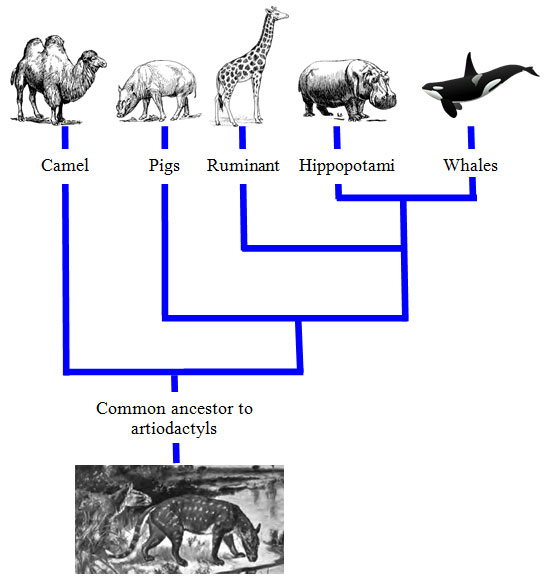
Source: All images, Clker, except the Agriochoerus, FunkMonk, Wikimedia
Linnaeus's strategy of classifying organisms according to visible similarities and differences seems simple at first. How should scientists decide which similarities and differences are most important? Linnaeus developed his system more than a century before Charles Darwin published his ideas about descent with modification from a common ancestor, a modern system of classification questions about evolutionary relationships. The goal of evolutionary classification is to group species into larger categories that reflect lines of evolutionary descent, rather than overall similarities and differences.
Classifying organisms according to the evolutionary descent places organisms into groups called clades. A clade is a group of species that includes a single common ancestor and all descendants of that ancestor, living and extinct. Clades must be a group that descends from a common ancestor. Clades are linked together into a diagram called a cladogram.
Below is an example of a cladogram. It shows the evolution of the artiodactyls or even-toed ungulates. Even-toed ungulates are hoofed mammals with an even number of toes on each foot. The even-toed ungulates include cattle, pigs, deer, hippos, goats, sheep, camels, llamas, giraffes, and antelope. In the cladogram, the giraffe is in a smaller group called ruminants. Ruminants have multi-chambered stomachs and chew their cuds for digesting coarse vegetation. Ruminants include sheep, cattle, giraffes, and deer.
Whales are cetaceans. Cetaceans include mammals that have adapted fully to life in the sea, such as whales, porpoises, and dolphins. They are descended from hoof-bearing land dwellers.

Source: All images, Clker, except the Agriochoerus, FunkMonk, Wikimedia
![]() Watch this video to learn more about cladograms, also known as phylogenetic trees. Take out a piece of paper to write the answers to the questions below.
Watch this video to learn more about cladograms, also known as phylogenetic trees. Take out a piece of paper to write the answers to the questions below.
Source: Phylogeny and Phylogenetic Trees, AdventOfComplextLife, YouTubeLife, YouTube
Interactive popup. Assistance may be required.
You know which animals are more closely related by looking at the linage lines which intersect first.
Interactive popup. Assistance may be required.
The point where the linage lines meet is called a node.
Interactive popup. Assistance may be required.
Time is represented by the present at the top, or tips, and the past toward the bottom.
Interactive popup. Assistance may be required.
The nodes represent the common ancestor of the organisms whose line of lineage forms the node.
There are many different ways to draw cladograms. All the cladograms below are showing the same relationship. Two of the organisms are closely related, and the third organism is not as closely related. The more the organisms are closely related, the more characteristics they will share.
